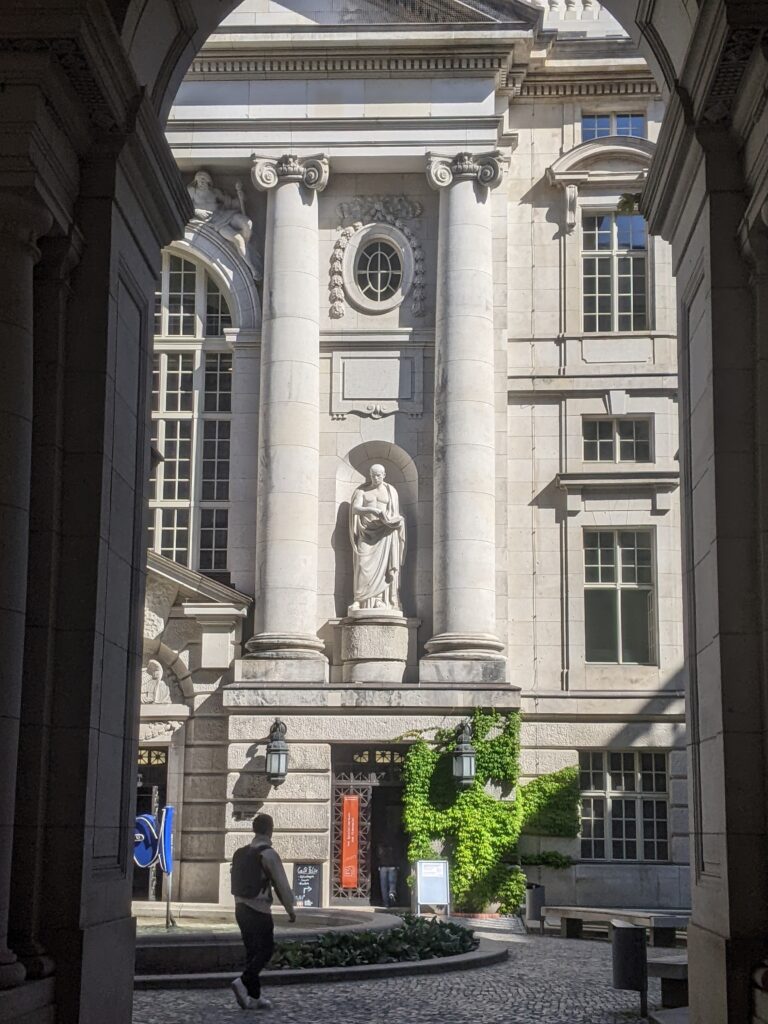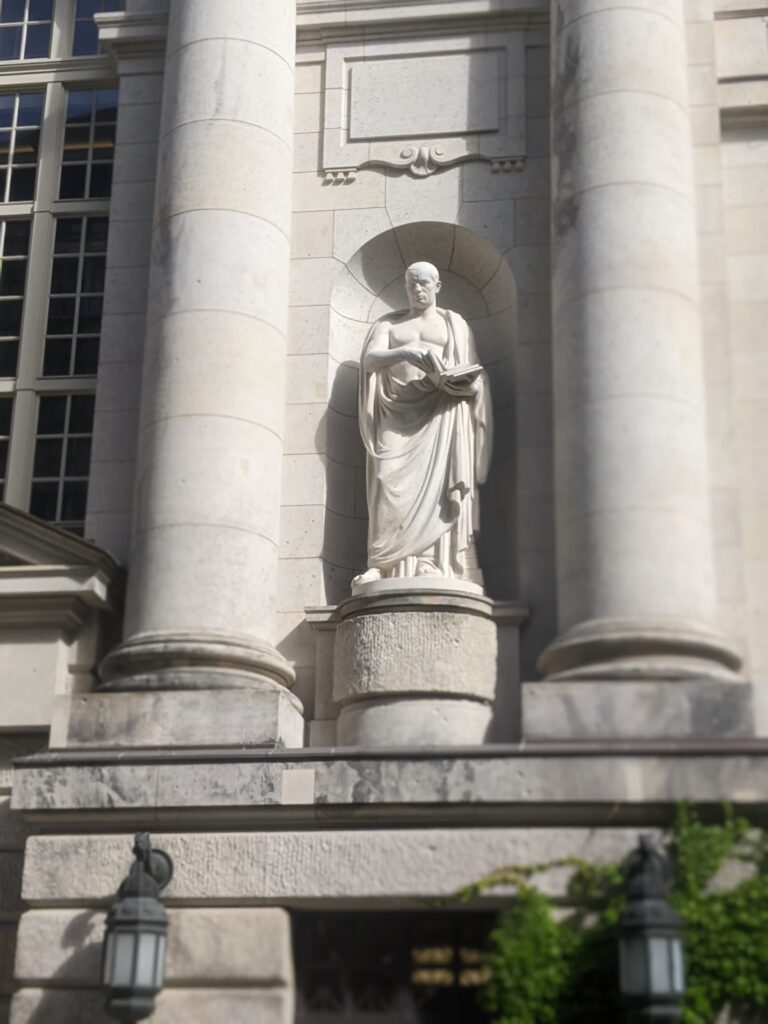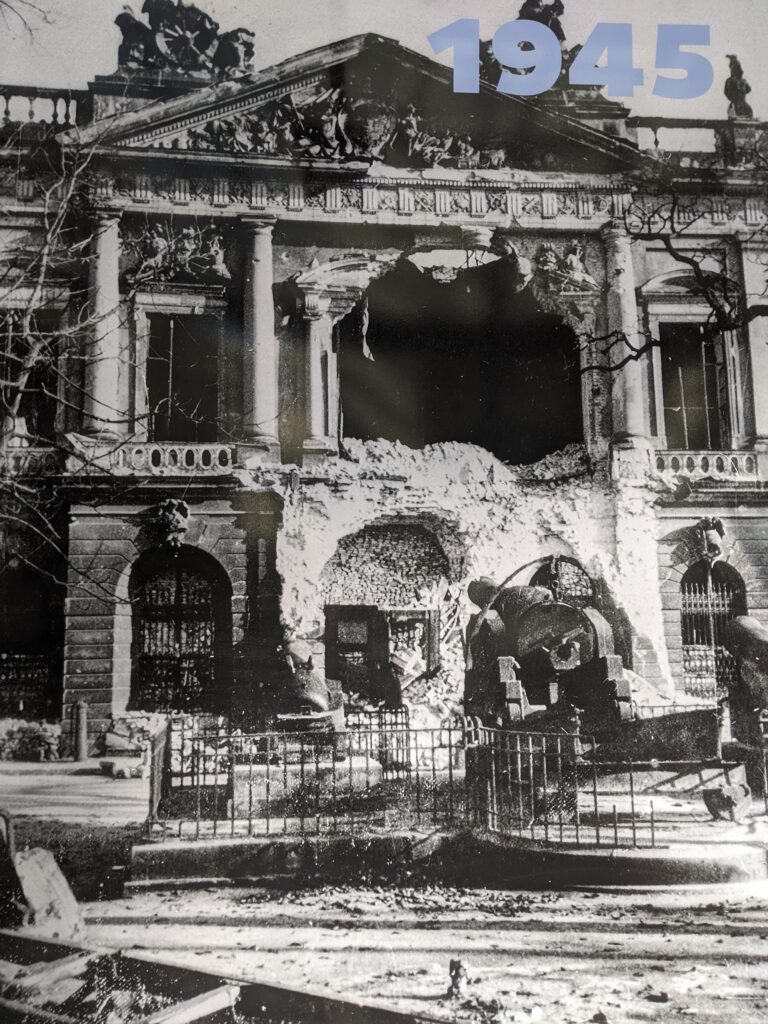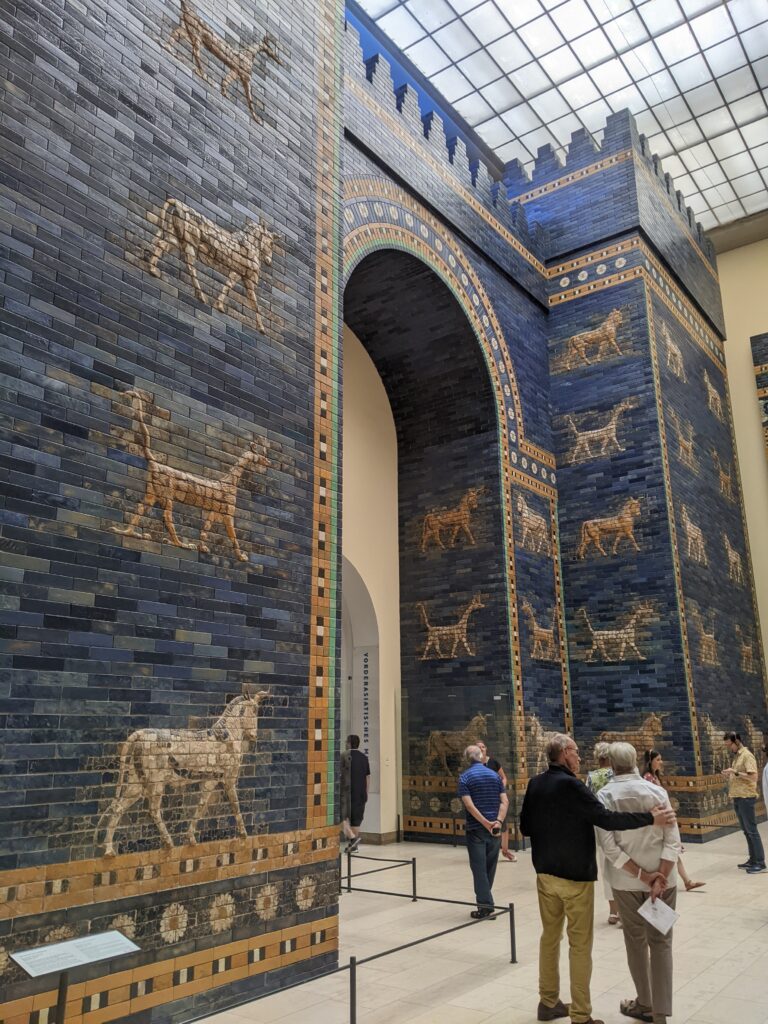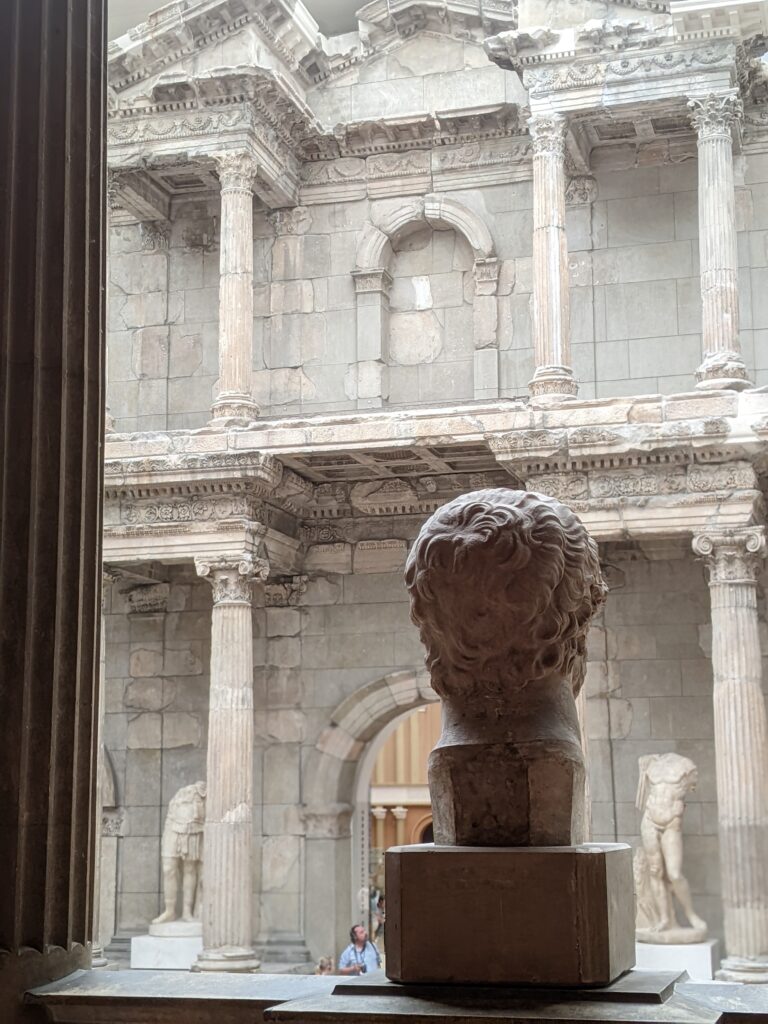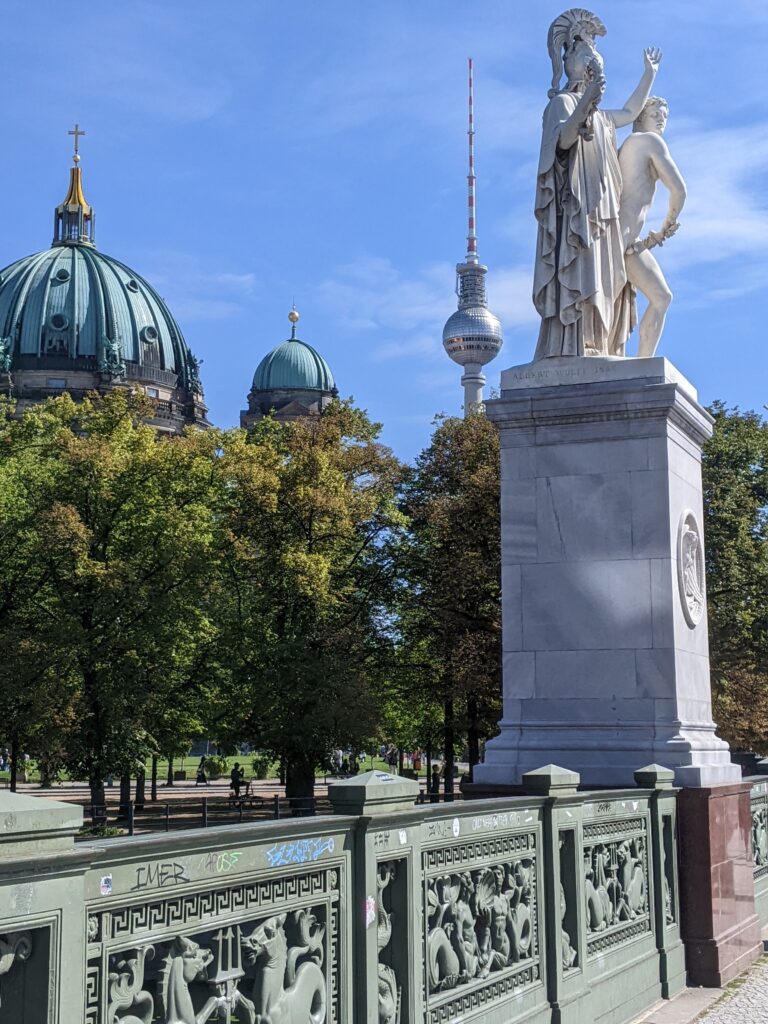In the 1700s Berlin was the capital of the Kingdom of Prussia, which was the nucleus of what eventually became Germany. In the mid to the late 1700s it was ruled by Frederick the Great, a great legal reformer, instigator of religious tolerance, military strategist, musician and friend of Voltaire.
The other morning I walked from the Brandenburg Gate to Museum Island. I passed the Berlin State Library – a beautiful classical courtyard with tall pilasters rising around its entrance half covered in climbing ivy. A statue of a scholar reading in a niche. This is one of the best libraries in the world with over 11 million volumes distributed across its sites. The old royal library is on the other side of the Unter de Linden boulevard I had walked along to get here and in front of that library the Nazi youth had burnt books they disapproved of such as the novels of Thomas Mann in 1933. Barbarians at the gates were here.
In front of the library in the middle of the boulevard is a giant equestrian statue in bronze of Frederick the Great, the philosopher King in eighteenth century Prussia (Germany did not exist yet). On the pedestal of the statue, you can see reliefs telling the story of his life, and one of them shows him playing the flute. He was such a good flautist that only accomplished players can play the works he wrote for flute today. He expressed a full gamut of emotions in his music and his concerts – of course this was on top of being a successful military strategist and directing the realm.
Then I stood in front of Humbolt University and looked up at the statue of Alexander von Humbolt. He sit on a globe of the world, and this is appropriate for a man who travelled so much, up South American mountains for example, and who said that ‘”The most dangerous worldview is the view of those who have never looked at the world”.
Walking on I stepped over the bridge to Museum Island, called the Schlossbrücke. The statues on the balustrades of the bridge made me think of Charles Bridge in Prague of the Ponte Sant’ Angelo in Rome – a triumphant and majestic mode of arrival as you step to the island. Of course they are much older in Rome, and the carrara marble here in Berlin was carved in the mid nineteenth century (much of the sculpture on the Ponte Sant’Angelo went up in the 1500s).
Then I got myself an annual pass to the state museums of Berlin and proceeded to walk around the Pergamon Museum. This contains one of the great marvels of the entire Middle East, the Ishtar Gate. It was excavated by Germans in the first decade of the twentieth century what is now Iraq from ancient Babylon and moved here, brick by brick in barrels pretending to contain coal. It was shipped to Berlin and carefully reconstructed. It is a long processional way, walled on both sides with moulded tiles in blue depicting lions walking forward. Then it culminates in a grand entrance to the city of Babylon. Amazing to imagine this civilisation, so exotic and far from the present (it was put up in 575 BC). Imagine finding this gate, deep under the sands. Bringing it to light again after thousands of years. The Bedouin people of the area would have found it just as exotic as us, so long had it been buried by the desert.
The Lustgarten, the lawn area in the centre of Museum Island, is one of the great public spaces in Europe, surely. The Berliner Dom, their cathedral, is so vast it is a little sibling to St. Peters in Rome. What glory old Prussia brought forth in this ensemble of spaces and buildings in this area of Berlin.
